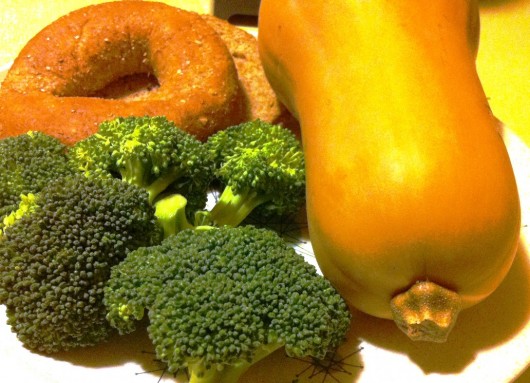Vegetarian, vegan, gluten-free, paleo, flexitarian – the range of specialty diets in the United States becomes broader every year. And with the summer tourist season approaching, some restaurant owners took advantage of a presentation at the Ketchikan Visitors Bureau about what these diets are, and ways to cater to customers who follow them.
Audio PlayerKate Cessnun is a registered dietitian at PeaceHealth Ketchikan Medical Center, so she knows more than the average person about all the different diets people follow. She focused her presentation on three of the most common diets, vegetarian, vegan and gluten-free.
She started with the vegetarian diet, which she says includes many variations.
“Different people will call themselves vegetarian, but the diet will vary from person to person,” she said. “Some people will eat fish, but it is a mostly plant-based diet. That’s the key thing to remember – it’s a diet where the focus is on eating less meat and more plants.”
Cessnun said there are many health advantages in following a primarily plant-based diet, because most Americans eat too much protein, anyway, and not enough plants. A term some people use if they are mostly vegetarian but sometimes eat meat is “flexitarian.”
Vegans, though, don’t eat meat, and avoid most if not all animal products, including dairy, eggs and honey. But, like vegetarianism, individual vegan diets can vary.
Cessnun said there are some common processed foods that are vegan.
“Oreos are actually vegan,” she said. “Not that it’s healthy.”
Gluten-free is a more complicated diet to accommodate. Gluten comes from wheat, barley and rye, but it’s found in many processed foods, including standard soy sauce. Some of the people who follow that diet have a proven medical need – celiac disease — and for them, even a trace of gluten could trigger an immune-system response.
“So let’s say you have salad, you put croutons on it and then you took the croutons off, that salad would no longer be gluten-free, because it touched something with gluten in it,” Cessnun explained. “So at the hospital, we have a specific cutting board, a specific knife and a specific toaster for patients that come through who have celiac disease, or gluten-free diets.”
Others who follow the diet, though, don’t have a medical reason, and like vegetarians and vegans, vary in how strictly they follow it.
Cessnun said that because of the variety within each diet, the best practice is to ask for specifics from each customer.
“There’s no way you’re going to be able to accommodate everything,” she said. “I think having a background in it can help with the accommodation process, and figuring out, ‘We might not be able to do all of that, but we can make little adjustments here and there.’”
Some of the adjustments discussed include offering corn tortillas instead of flour for fish tacos, offering a vegetarian taco with beans instead of fish or meat; and serving a crustless cheesecake for a gluten-free dessert.
Cessnun also offered some healthier alternatives for desserts, such as chia-seed pudding made with almond milk; chocolate pudding made with avocado and dates; or just substituting applesauce for some of the refined sugar.
“That could be a marketing tool,” she said. “I don’t know how many tourists are coming up (who want healthy food). Most people are seeing this as vacation, from what they normally eat at home, but for those who are looking for that…”
Joan Walker and Brandie Barry of the Crab Cracker restaurant were among the small group of business owners attending Cessnun’s presentation. Barry said there has been an increase in special diet requests over the years, which is why she wanted to come to the talk.
“I’ve noticed each summer, there are more and more requests for gluten-free, vegetarian and vegan,” she said, adding that she got some good ideas from the presentation.
For recipe ideas, Cessnun recommends searching the Internet, especially vegan food blogs, which often offer gluten-free recipes, as well.






